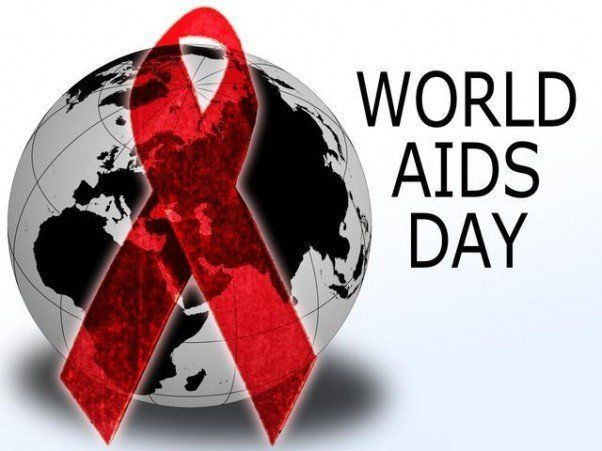
This World AIDS Day, global health pundits are again offering answers to the perennial questions: Can we, and when will we, eliminate HIV and its sibling plague, TB? The two pandemics are, after all, deeply intertwined: TB remains the leading cause of death for those infected with HIV. Advocates and activists have set their sights high. They want to "Get to Zero": zero new HIV infections, zero discrimination, zero AIDS related deaths; and, similarly, zero TB deaths, zero new TB infections, zero TB suffering. Not everyone thinks this is realistic. Many global health experts share the views expressed by Tom Paulson in a recent Humanosphere post titled, "Sorry, but no, the end of AIDS is not in sight."
We share the ambition of the optimists, even if it is tempered by realism. But we also believe that the more pertinent issue just now is how we plan to get there. How will we care for all the millions already living with HIV and the nearly 7,000 people who are newly infected every day? How can we save the nearly 4,000 people whose lives are claimed by TB each day? And, above all, how will we reduce the unacceptably high rate at which these new infections occur?
Any truly effective response against either disease will have to be comprehensive: one that scales up existing programs for prevention and care while quickly rolling out new biomedical tools and strategies to reduce transmission -- especially vaccines. We look to what has been achieved by smallpox and polio vaccines with great admiration and hope. The development of a smallpox vaccine and its methodical distribution to all who needed it resulted in one of humanity's greatest achievements: the eradication of that lethal disease. Now, through similar efforts, we are close to wiping polio off the earth. Only 650 cases of polio were recorded globally last year; compare that to the 60,000 cases tallied in the United States alone in 1952.
We believe that while it's likely to prove much tougher, we can also win the battle against two of humanity's deadliest infectious diseases, HIV and TB. After decades of frustrating trial and failure, HIV prevention research is now bearing fruit. In just the past four years, researchers have demonstrated how everything from a microbicidal vaginal gel to the antiretroviral drugs used to treat HIV can be deployed to significantly reduce transmission of the virus. Researchers also demonstrated for the first time, in a trial completed in Thailand in 2009, that a vaccine can prevent HIV infection. Though the 31% efficacy of the vaccine candidate is considered modest, researchers have learned a great deal about the biological underpinnings of that protection, and are using that information now to improve the design of HIV vaccines. Meanwhile, HIV researchers have isolated from HIV positive people around the world scores of antibodies that neutralize a broad spectrum of HIV strains. They have also analyzed the mechanisms by which the most potent of these "broadly neutralizing antibodies" disable HIV, and are now using that information to begin devising vaccine candidates that might elicit similar antibodies--a long-cherished and elusive goal of HIV vaccine research.
TB vaccine development, meanwhile, has made significant progress following a roughly 80-year hiatus that followed the development of the BCG vaccine, which is primarily used to immunize infants but has failed to end a pandemic that is primarily driven by transmission by adolescents and adults with pulmonary TB. Researchers have moved 16 new TB vaccine candidates into clinical trials in recent years. Results from a large efficacy trial of one such candidate for infants are due next year. We can't know the outcome until the results are unblinded. But we can say that, at the very least, we will garner invaluable information that will be applied to decipher the TB bacterium's interaction with the immune system and improve the design of future vaccine candidates. In other words, whatever the particular outcome of this trial might be, it will advance the overall effort to rid the world of TB.
The first generations of vaccines against either of these diseases will probably provide only partial protection. Yet just as the earliest, rudimentary telecommunications devices -- like the telegraph -- revolutionized long-distance communications, we expect that even partially effective TB and HIV vaccines could have a far-reaching impact on these twin pandemics. Indeed, modeling done by IAVI and the Futures Institute suggests that an HIV vaccine that is just 50 percent effective, even if given to only 30 percent of eligible people in low and middle-income countries, would reduce new infections by 20 percent in the developing world within the first decade of its introduction. Imagine the effect if it happens to be rolled out on top of other preventive measures. Better yet, as researchers continue to innovate and learn from previous efforts, future vaccine candidates against TB and HIV will be increasingly sophisticated and effective -- much as the first telegraph seeded the chain of innovation that culminated in today's ubiquitous smart phone.
Neither plague will, however, be eliminated without ambitious vision, sustained innovation and long-term investment. Both HIV and the bacterium that causes TB have turned immune evasion into an art form and both are adept at developing resistance to drugs. Nor do they just take lives. Both HIV and TB exact a huge economic toll in medical costs and lost productivity. In the hardest hit countries, TB alone robs economies of U.S. $1 billion each day. We should take this day to celebrate recent successes in the prevention and treatment of HIV and TB. But we should not forget that if we hope to drive these intertwined diseases down to zero, as we have done with smallpox, we will need to systematically harness scientific discovery, nurture innovation and keep support alive for the quest to develop effective preventive vaccines.